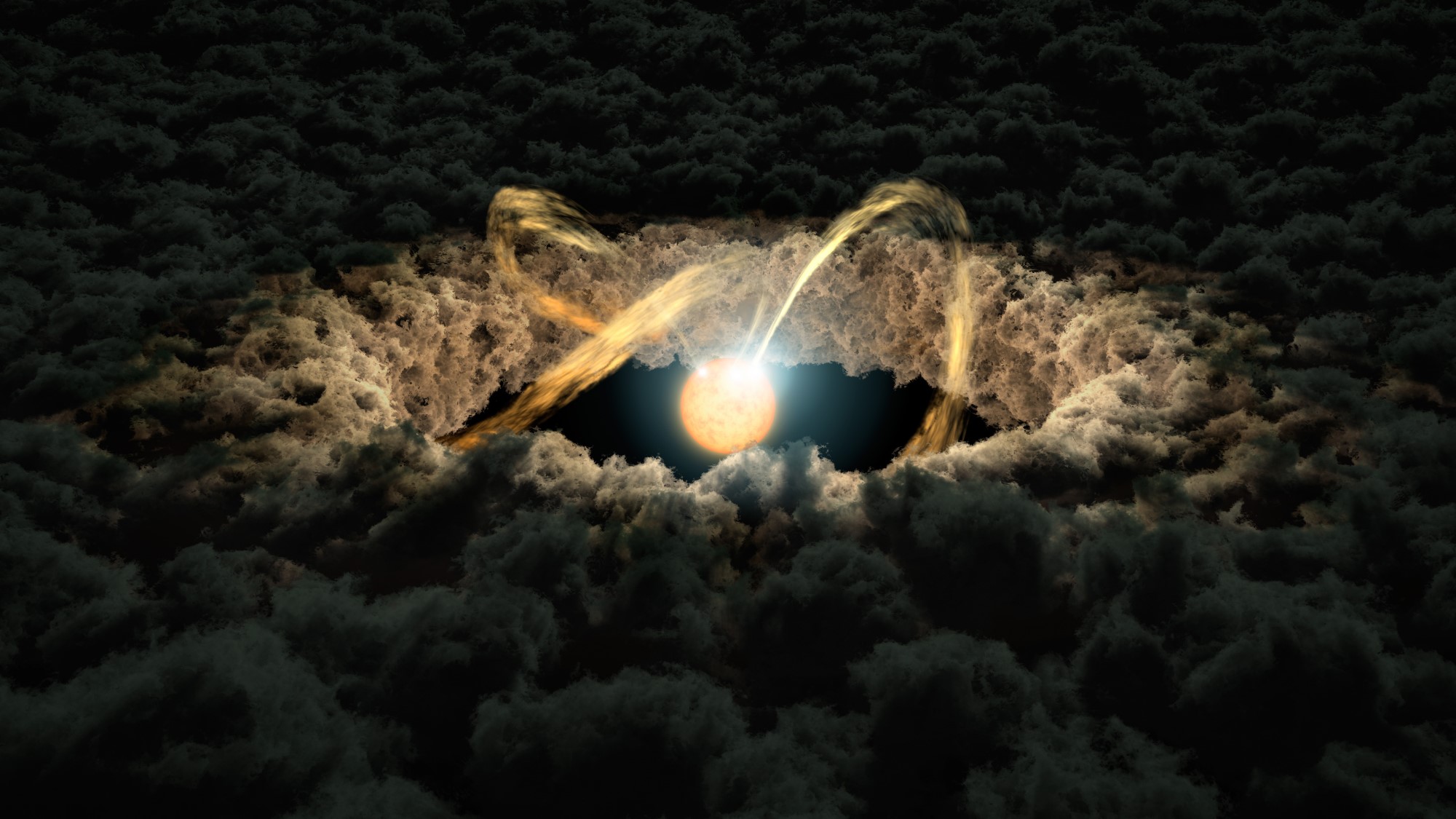'Little hurricanes' around young stars can help astronomers measure infant exoplanets
Using traditional methods would be like "trying to spot a firefly in front of a lighthouse."

Young stars are surrounded by chaos: Clouds of gas, dust and ice swirl about in a so-called protoplanetary disk. And when gravity pulls this material together so that it binds, planets are born.
Using the Atacama Large Millimeter/submillimeter Array (ALMA) in Chile, researchers developed a new technique to measure and date infant exoplanets forming in these protoplanetary disks. By studying "little hurricanes" within protoplanetary disks that are visible in ALMA data, astronomers can make educated guesses about the exoplanets that caused these vortices.
Under most circumstances, scientists can use powerful telescopes to observe the dimming of stars, which indicates that an exoplanet is transiting, or passing between Earth and the star. But this research team is specifically studying young exoplanets that are distant from their stars, and these planets can't be seen clearly with traditional techniques.
Related: Secrets of planet birth revealed in amazing ALMA radio telescope images
"It's extremely difficult to study smaller planets that are far away from their star by directly imaging them: it would be like trying to spot a firefly in front of a lighthouse," Roman Rafikov, a professor at the University of Cambridge and the Institute for Advanced Study, said in a statement. "We need other, different methods to learn about these planets."
The team's new technique also uses an indirect form of observation to study exoplanets: Instead of looking for transits, they're searching for unusual formations, such as arcs or clumps, that form in the protoplanetary disk.
"Something must be causing these structures to form," Rafikov said. "One of the possible mechanisms for producing these structures — and certainly the most intriguing one — is that dust particles that we see as arcs and clumps are concentrated in the centers of fluid vortices: essentially little hurricanes that can be triggered by a particular instability at the edges of the gaps carved in protoplanetary discs by planets."
Get the Space.com Newsletter
Breaking space news, the latest updates on rocket launches, skywatching events and more!
By studying the properties of the vortices, which require a certain amount of time and mass to form, astronomers can estimate the age and mass of the exoplanet that created them.
"Our constraints can be combined with the limits provided by other methods to improve our understanding of planetary characteristics and planet formation pathways in these systems," Rafikov said. "By studying planet formation in other star systems, we may learn more about how our own solar system evolved."
Two papers on the team's research have been published in the journal Monthly Notices of the Royal Astronomical Society: one about the vortices themselves (Dec. 20) and another about using the vortices to measure and date exoplanets (Jan. 4).
Follow Stefanie Waldek on Twitter @StefanieWaldek. Follow us on Twitter @Spacedotcom and on Facebook.
Join our Space Forums to keep talking space on the latest missions, night sky and more! And if you have a news tip, correction or comment, let us know at: community@space.com.

Space.com contributing writer Stefanie Waldek is a self-taught space nerd and aviation geek who is passionate about all things spaceflight and astronomy. With a background in travel and design journalism, as well as a Bachelor of Arts degree from New York University, she specializes in the budding space tourism industry and Earth-based astrotourism. In her free time, you can find her watching rocket launches or looking up at the stars, wondering what is out there. Learn more about her work at www.stefaniewaldek.com.
-
rod "The team's new technique also uses an indirect form of observation to study exoplanets: Instead of looking for transits, they're searching for unusual formations, such as arcs or clumps, that form in the protoplanetary disk. "Something must be causing these structures to form," Rafikov said. "One of the possible mechanisms for producing these structures — and certainly the most intriguing one — is that dust particles that we see as arcs and clumps are concentrated in the centers of fluid vortices: essentially little hurricanes that can be triggered by a particular instability at the edges of the gaps carved in protoplanetary discs by planets."Reply
My observation. The papers cited indicate these observations and model interpretations could work for fairly large exoplanet masses. https://arxiv.org/abs/2301.01789; "These results can be extended to account for the history of planetary mass accretion if it is known. We apply our calculations to several protoplanetary discs harbouring vortex-like features as revealed by ALMA and set limits of (30−50) M⊕ (for disc aspect ratio of 0.1) on the minimum masses of putative planets that could be responsible for these vortices."
Such postulated exoplanets forming would be much larger than Uranus or Neptune in our solar system.









